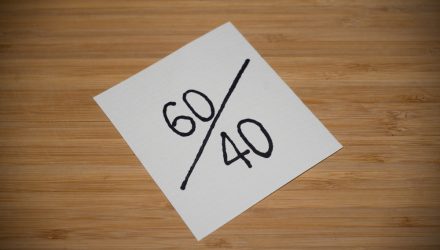The 60/40 portfolio composed of stocks and bonds, respectively, has somewhat fallen to the wayside in the past decade. But with optimism flooding the bond markets for 2024, it could make a comeback.
Vanguard, an ETF provider of fixed income products, has been one of the staunch supporters of the 60/40 portfolio. That was even the case in 2022, when Fed rate hikes were causing both the stock and bond markets to fall.
“Since last year, Vanguard has been pushing back against the view that the 60/40 way of investing is over or is dead,” said Roger Aliaga-Diaz, Vanguard’s chief Americas economist and global head of portfolio construction. “In fact, what we see from our capital market outlook: The future 60/40 is actually much brighter now than during the years of easy money, prior to COVID with zero rates.”
He also added that the 60/40 portfolio is returning to normalcy regarding returns. They are starting to average between 5%-7%. That falls in line with the typical 60/40 portfolio performance.
The prevailing sentiment in the capital markets is that rate cuts will eventually occur in 2024. And that should push bond prices higher.
“This will bring the rate down [and]help the bond side of the portfolio, and vice versa [with equities],” Aliaga-Diaz added.
Add One ETF for 40%
Investors who want to implement the 60/40 portfolio have an ocean of options to choose from. Those include individual debt holdings as well as ETFs. However, broad-based allocation can be had with one ETF: the Vanguard Total Bond Market Index Fund ETF Shares (BND). It carries a low 0.05% expense ratio.
Per its baseline fund description, BND seeks the performance of the Bloomberg Barclays U.S. Aggregate Float Adjusted Index. That index represents a wide spectrum of public, investment-grade, taxable, fixed income securities in the U.S., including government, corporate, and international dollar-denominated bonds, as well as mortgage-backed and asset-backed securities, all with maturities of more than one year.
Additionally, because BND offers aggregate exposure, bond investors can use the ETF as a traditional hedging component when the equities market goes awry in, for example, a traditional 60/40 stock-bond portfolio. Short-term traders can also use the ETF given its dynamic ability to be bought and sold quickly in the open market versus individual bond holdings.
For more news, information, and strategy, visit the Fixed Income Channel.

